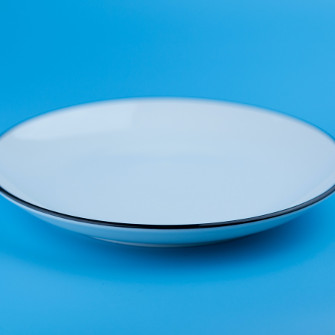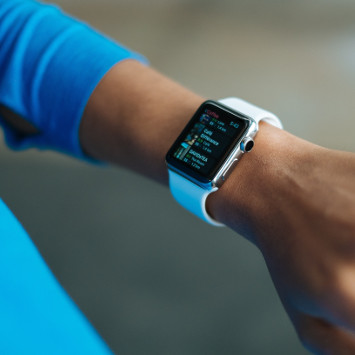La frequency variability cardiac o heart rate variability (HRV) is one of the most important indicators of our psycho-physical stress level. In this in-depth article we will find out what it is, how we can measure it, but above all how we can improve it.
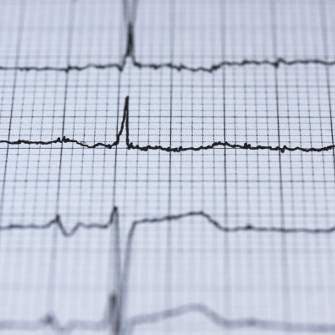
In this second post from GetPersonalGrowth's column on the Biohacking,
As promised in the introductory article of the column, the new contents dedicated to Biohacking will be very detailed and concrete, in the classic style of GetPersonalGrowth.
Specifically, this content dedicated toheart rate variability (HRV) it's a real short essay, so don't be scared if some passages seem a bit technical to you :)
La heart rate variability it is in fact a really important indicator for our health and our psycho-physical well-being, so we decided to create with dr. Triglione a content as complete and effective for our readers.
In this article you will find references historical ed anatomist, the precise indication of HRV measurement devices e concrete techniques to improve your parameters.
Are we leaving? I pass the word to Dr. Triglione.
What is HRV (heart rate variability)
The signals of your heart are all to be taken seriously, but there is one that more than others is of fundamental importance and has so far been overlooked by many: theHRV, heart rate variability.
In fact, HRV is much more than a simple number: it represents an objective and non-invasive evaluation of your ability to cope with psycho-physical stress ed emotional.
Not only.
Monitoring this parameter can help you to understand in a personalized way what can really help you improve yours Resilience and yours resistance in the face of the pressures of life.
But what is HRV?
The abbreviation HRV indicates the heart rate variability or the heart rate variability, in other words, HRV allows us to have an estimate of the variations that occur between one beat of our heart and another.
The HRV analysis is in fact based on the calculation of theinterval between one pulse and another, measured in milliseconds (ms).
Your heart is not (and does not have to be) a metronome
But why is it so important to measure the variability of our pulsations?
We are led to believe that a heart rate of 60 beats per minute (bpm) corresponds to one beat every second.
We think the heart should beat precisely like a metronome to be healthy, but in reality the opposite is true.
A healthy heart beats in an apparently disordered way: between one beat and the next 800 milliseconds (ms), then 740 ms and finally 980 ms can pass.
So if the heart rate (HR) is an average of the number of heartbeats in one minute, theHRV represents the modulation of these beats and can vary with the same HR. This information, as we will see, is very valuable and will help us understand what our stress levels are (and how we can improve them).
First, however, I have to reveal the origins of this very important parameter ...
Historical background: the journey of the HRV from China to the sofa in our house
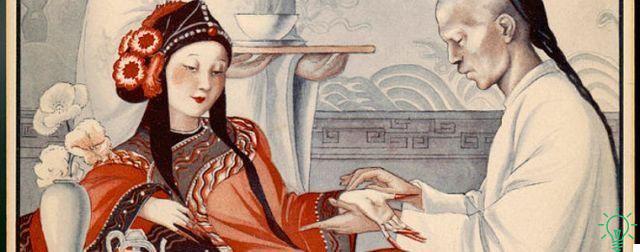
The doctors of ancient China, experts in palpation of the pulse, were used to noticing the most subtle changes in the heartbeat and to associate them with the state of health of their patients.
The following quote, found in a treatise on Traditional Chinese Medicine, belongs to Wang Shuhe, a doctor who lived around 200 AD:
"If the heartbeat becomes regular like woodpecker ticking or rain dripping on the roof, the patient will die within four days."
Having read this observation by a "colleague" who lived almost 2.000 years ago intrigued me a lot and is one of the reasons why I have been studying HRV for years.
In general, the Western scientific community's attention to heart rate variability dates back to the 70s and 80s.
In 1996 a Task Force of the European Society of Cardiology and North American Society of Electrophysiology published guidelines relating to HRV analysis and standardization of measurement methods.
At the time, however, instruments capable of accurately measuring HRV were few and difficult to use, which is why the study of this important parameter was confined to a few research laboratories.
In recent years, thanks to the spread of w and of devices that can easily measure the activity of our heart and nervous system, HRV monitoring has become within everyone's reach.
Suffice it to say that the data that we can collect today by remaining comfortably seated on the sofa at home for 5 minutes, until a few years ago required a prolonged recording of the electrocardiogram in the hospital.
By which time you are probably wondering… “Ok, I can measure HRV on my sofa, but why should I do that? What is so important about this parameter? "
HRV: the parameter that unites heart and brain
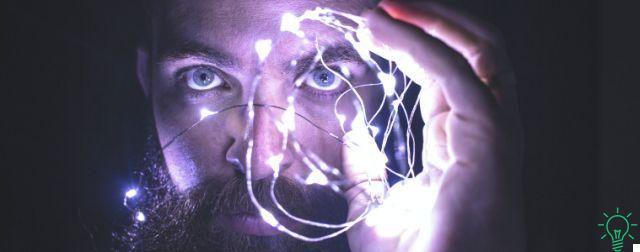
Heart rate variability can tell us a lot about how the heart and brain communicate with each other.
Technically speaking, HRV is a measure of the influence of autonomic nervous system (SNA) sul sino-atrial node, a real natural pacemaker of the heart, positioned on the roof of the right atrium.
I hope the anatomy hints aren't scaring you! I will try to be as clear and concise as possible.
We can divide the nervous system into two large units:
- Il central nervous system: controls conscious functions such as those of nerves and muscles, processes information from other organs and from the outside, sends new signals to be redistributed to the periphery;
- Il peripheral nervous system: connects the central nervous system to the rest of the body. Further divided into somatic nervous system and autonomic nervous system.
Il autonomic nervous system (ANS) carries out continuous physiological adjustments with the aim of maintaining a state of dynamic equilibrium within our body that takes the name of homeostasis (GetPersonalGrowth told you about it in this article on resistance to change).
The ANS controls the functions related to internal organs and acts by maintaining parameters such as blood pressure, cardiac output, respiration, body temperature, acid-base balance, volume and osmolality of liquids over time, within physiological limits.
The autonomic nervous system is in turn composed of two other systems and its functioning can be better understood by comparing it to that of a car:
- nice white - mediated by the spinal chain: accelerator.
- parasympathetic white - mediated by the vagus nerve: brake.
In most physiological conditions, the activation of one of these branches is accompanied by the inhibition of the other, suggesting the concept of sympatho-vagal balance.
The task of the ANS is to make sure that all systems work in harmony without negatively affecting the state of health.
Furthermore, in recent years, the polyvagal theory by the American neurophysiologist Prof. Stephen Porges contributed significantly to the definition of the role of vagus nerve in social connections, in the regulation of emotions and in the adaptive response to stress.
Well, the hints of anatomy end here. We will now focus on the practical applications of heart rate variability (HRV).
... and don't worry if at first reading the concepts seen so far seemed difficult to you:
"If the human brain were so simple that it could be understood, we would be so simple (ed. Stupid) that we couldn't understand it."
Emerson W. Pugh.
How to measure heart rate variability (HRV)
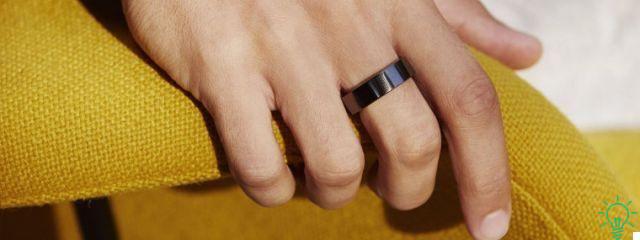
The most frequent errors in data collection and interpretation of HRV depend on the absence of standard procedures and conditions that can be reproduced over time. In fact, the moments of the day in which this value reliably communicates information relating to the autonomic nervous system and its influence on the heart are those with the least impact of confounding factors (movement, digestion, caffeine intake, etc.).
So let's see how to reduce these errors and when to measure our heart rate variability:
- As soon as you wake up: in this moment the perfect conditions of rest and fasting are found to perform an accurate test in a few minutes. There are several tools for this mode, in fact it is possible to opt for one chest heart rate monitor, for an finger sensor or anWhatsapp (the one linked is the first app, scientifically validated, able to collect data with photoplethysmography using the smartphone camera to detect the volume of circulating blood).
- Overnight: the ring Oura is the first wearable biometric device capable of measuring HRV at night - a valid alternative to daytime analysis. Also this ring monitors sleep quality with good sensitivity. Its results were compared in a study with polysomnography, a reference method for the simultaneous recording of physiological parameters during sleep. The ring is not immune to errors but still remains reliable over the long term.
Whichever method you choose, my advice is to take measurements for at least 5 days a week in order to evaluate the long-term trend.
In addition, scientific research has highlighted the importance of correlating the data obtained with some subjective assessments referring to sense of well-being perceived at that time (questionnaires, rating scales, emoticons). This simple trick is able to improve the interpretation of the signals sent by our body.
Why prefer these tools? The importance of rMSSD
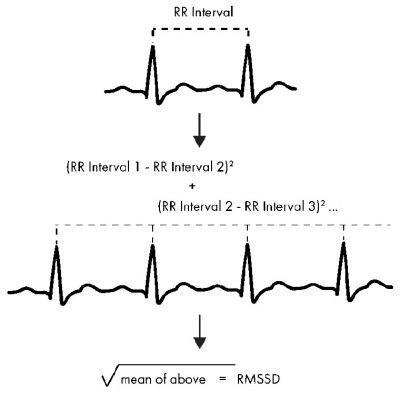
Nowadays it is very easy to find software and devices that measure heart rate variability, however I suggest you choose one of those listed in the previous paragraph (or a few others such as emWave of Heartmath, Firstbeat, Biostrap o Whoop).
In fact, these devices measure HRV in relation to a specific parameter: therMSSD.
The rMSSD, or the mean square root of the differences between adjacent intervals, today represents the best marker of the organism's ability to adapt in response to stress.
This method of calculating HRV provides vital information on the activity of the cholinergic reflex, that is, the body's endogenous anti-inflammatory response: a key mechanism in our body that protects us from the onset of pathologies.
Specifically, a disordered lifestyle and the accumulation of stress prevent the correct functioning of the cholinergic reflex, resulting in low values of therMSSD
From a practical point of view, to a low rMSSD (and consequently to a bass HRV) Correspond:
- Poor resilience after one physical effort.
- Difficulty in coping with a high-level situation stress emotivo.
- Increased fasting blood sugar.
- Increase in nocturnal urinary cortisol.
- Increase in pro-inflammatory cytokines.
Now that we know what HRV is, why it is so important and how we can best measure it, let's try to understand how we can improve this parameter to regain our well-being and counterbalance the negative effects associated with low HRV.
How to train our HRV

Understanding how ours works autonomic nervous system and understanding how to change our lifestyle to improve health is like taking a trip around the world.
There are so many places to explore that we feel excited, confused and scared at the same time.
One moment ready to change all habits and the next moment reluctant to get up from the sofa.
But when these measurements become part of our daily routine something happens, we notice an increase awareness of our psycho-physical state and we better choose the activities that make us feel good.
Returning to ours HRV, there is a wide choice of techniques to train him, techniques that of course must be integrated into a wider intervention to improve the lifestyle.
I'll list the most effective:
- biofeedback: process by which we can learn to control and influence our physiological responses with the help of slow and diaphragmatic breathing. This is the case of the app "BreathingAvailable on Apple Watch or Heartmath Inner Balance device. To begin with, 5-minute sessions are enough, to be repeated a few times a week.
- Physical Activity: A personalized training routine based on HRV values guarantees better long-term performance. This method helps to define not only the intensity but also the best time to do physical activity - based on the state of fitness and the ability to react to psycho-physical stress on that particular day. The collection of these data, among other things, allows us to evaluate the personal adaptive response to various types of training, from cardiovascular to resistance training. The aforementioned devices Oura e Whoop they provide daily information within the relative apps on the recommended intensity level of training or on the need to recover due to intense workouts that took place in the previous 24-48 hours.
- Listen to Mozart: his sonata K 448 it is the only one with scientific evidence but it is certainly not the only melody to have powers over our brain. In fact, music and singing are able to positively influence our nervous system and HRV.
- Cold induced thermogenesis: a controlled and gradual exposure to cold water is able to improve the balance of the autonomic nervous system. Therefore, in the absence of medical contraindications, green light for cryotherapy, ice baths and cold showers. In this regard, we have created together with the GetPersonalGrowth team an in-depth content on cold showers.
Conclusions
Like other typical tools of the Biohacking, which we will discuss in the next installments, the monitoring of heart rate variability it should be used as a continuous feedback loop, so that this new awareness of our functioning leads us to improve health and psycho-physical performance.
It is therefore forbidden to lose sight of the main objective and stop contextualizing the measurements within the biopsychosocial model.
Of course, this approach also has limitations and I think it's important to share them with readers. I see two specifically:
- Just focus on the numbers ignoring the importance of constant subjective observation of one's feelings.
- Living with the handbrake on to totally avoid stressors. In reality, when stressful stimuli are short-lived, and administered in small doses, they can induce a positive adaptation in the body and are promoters of change.
Today anyone can undertake a path of growth and lifestyle improvement based on the scientific method in order to interpret the signals of the body in an age in which it is easy to lose contact with oneself.
A simple marker such as HRV signals the accumulation of stress caused by different sources and helps to make choices with the aim of achieving and maintaining a lasting state of well-being.
"Knowledge is power".
Francis Bacon.




